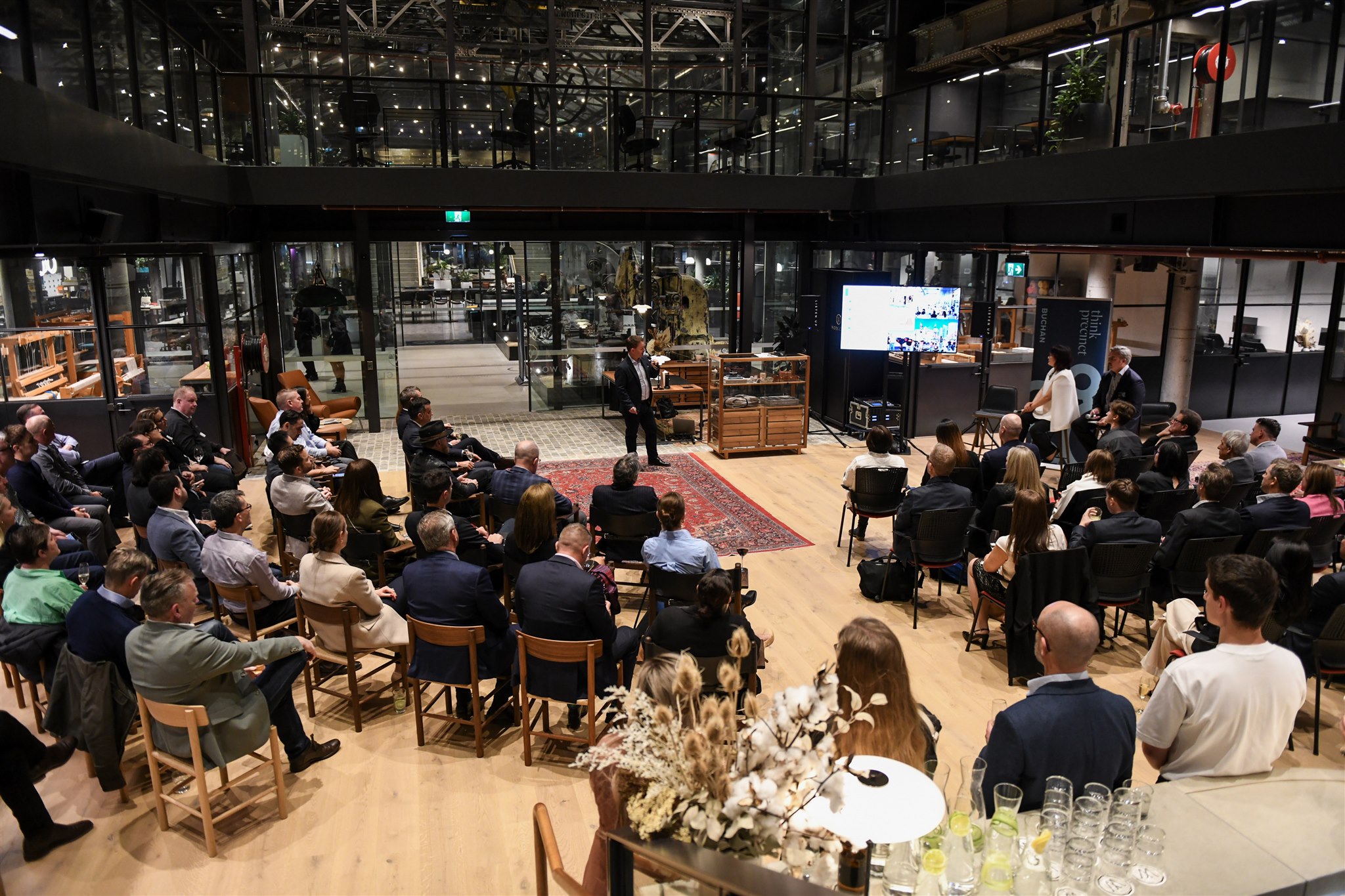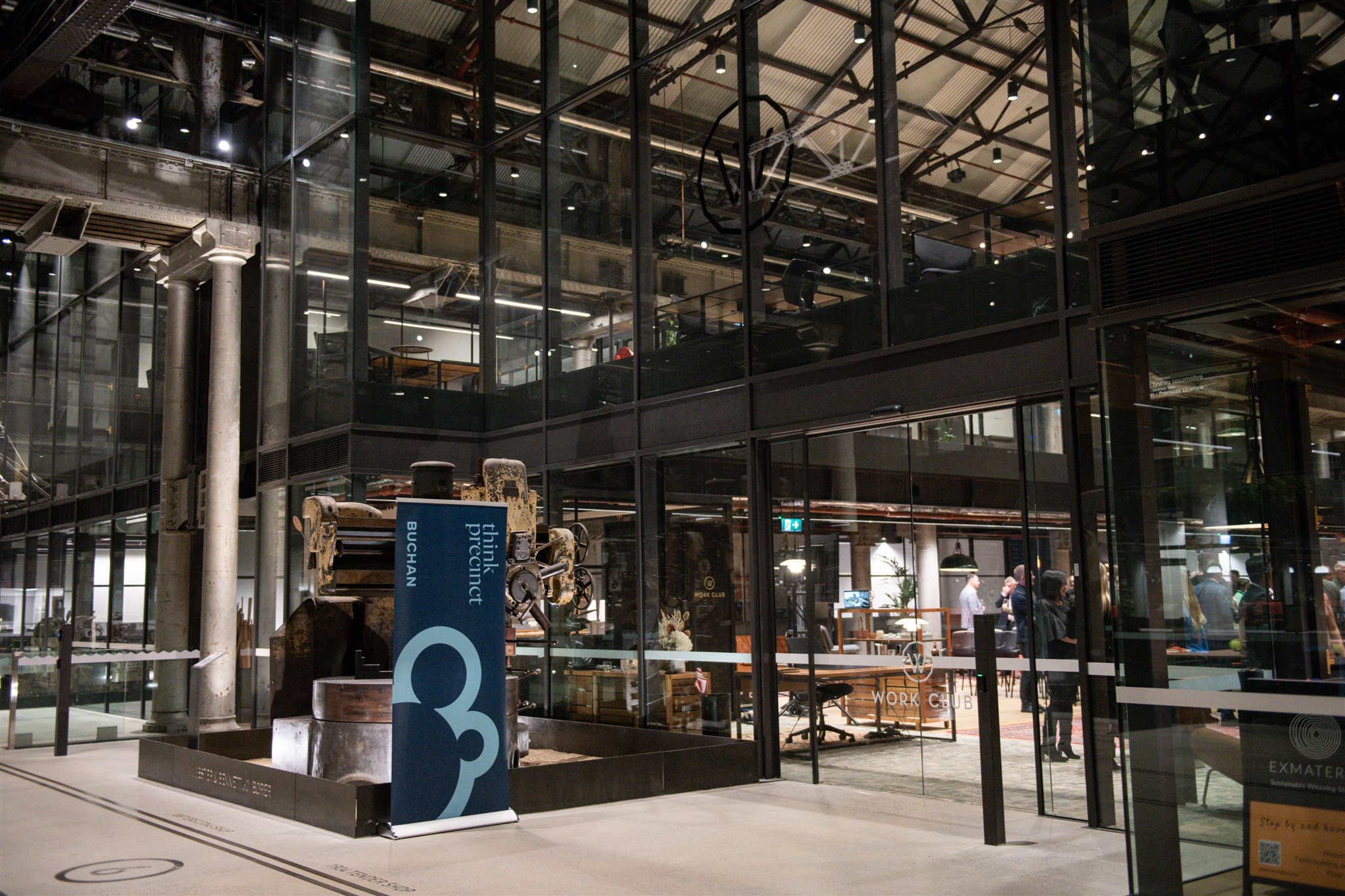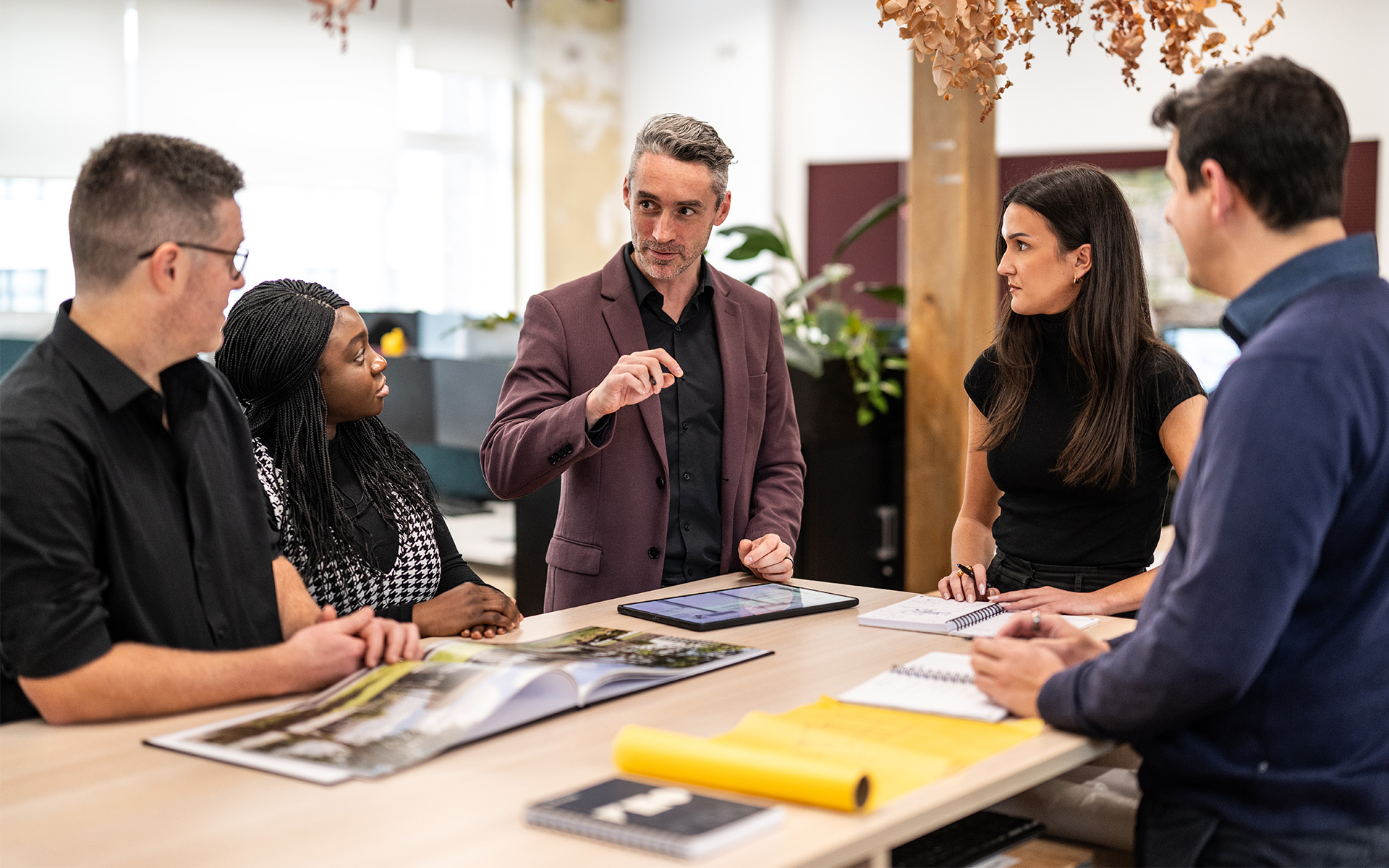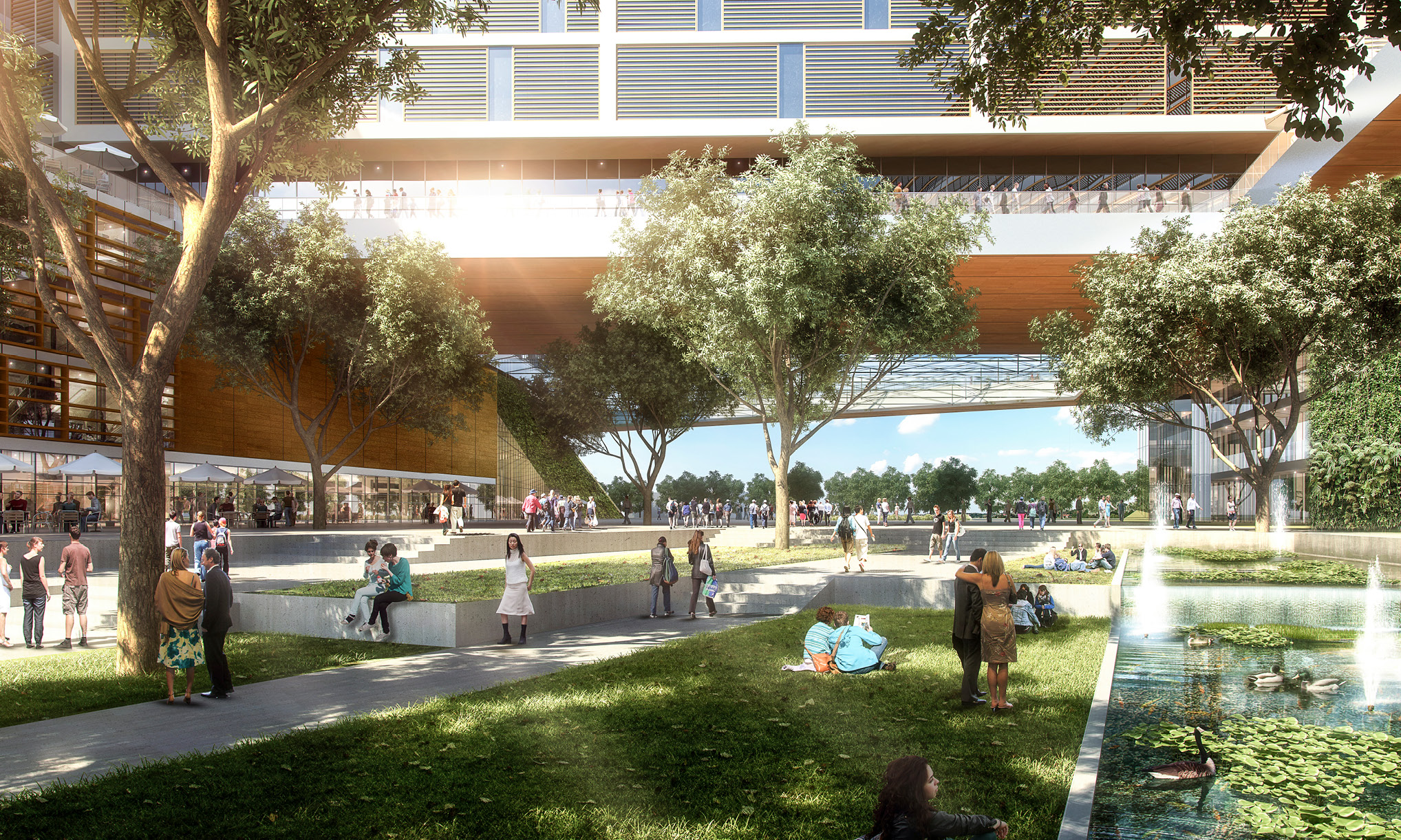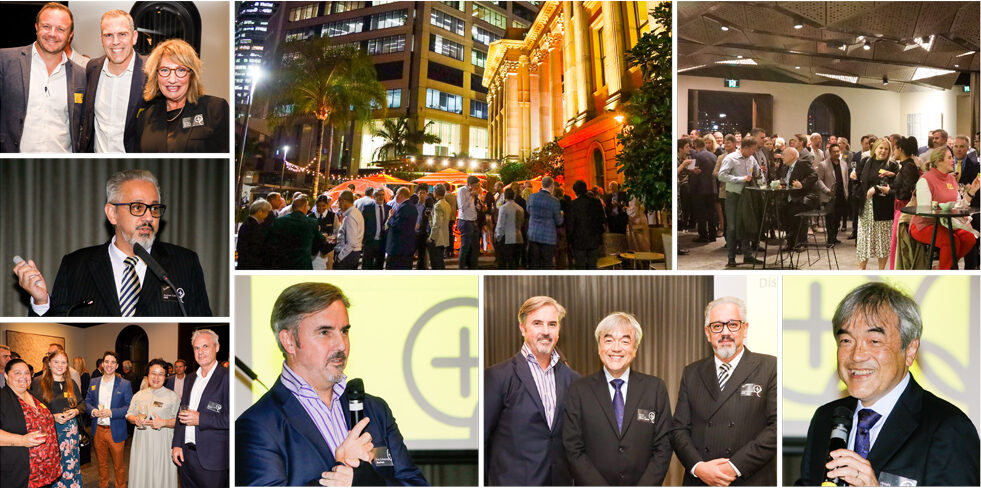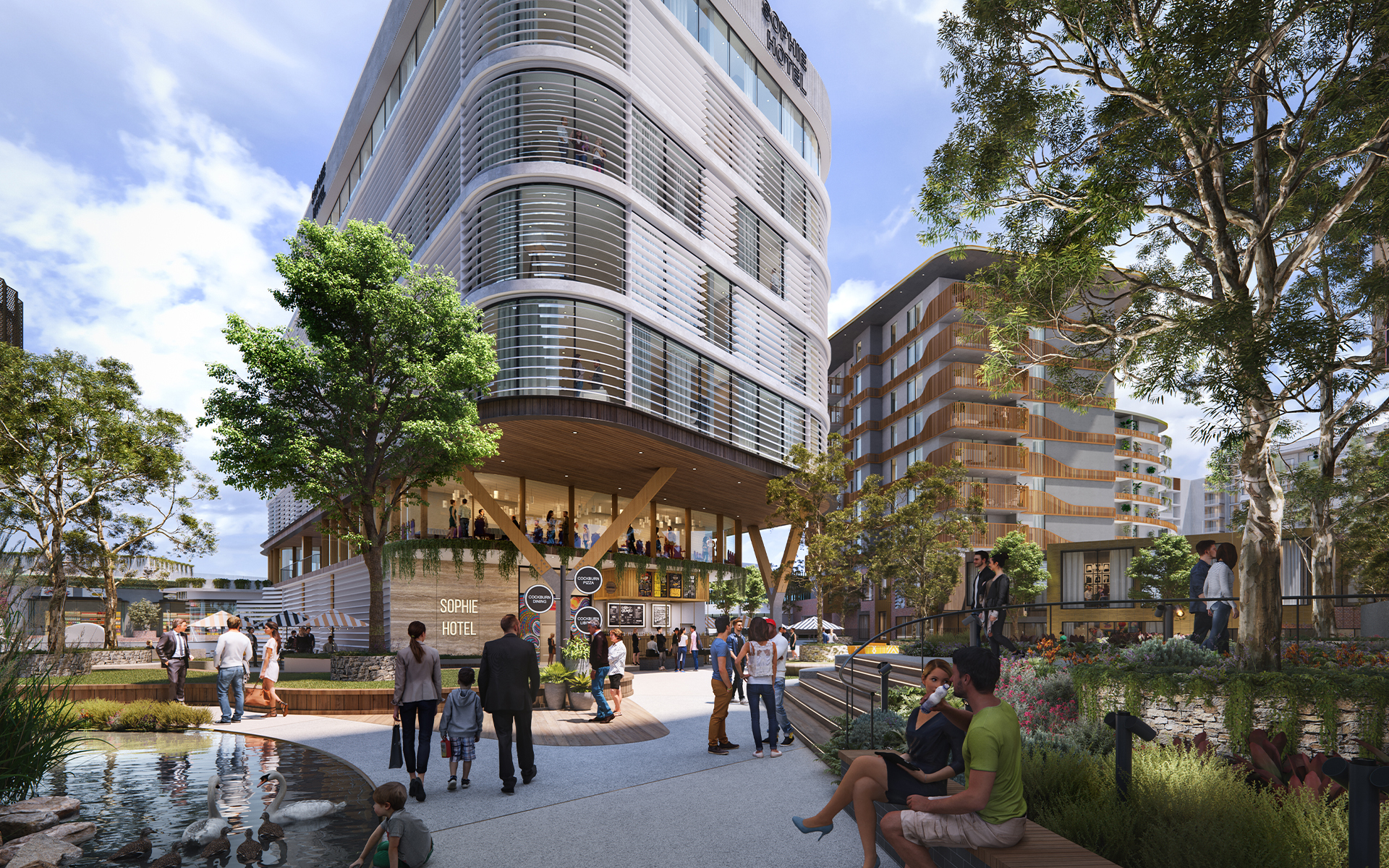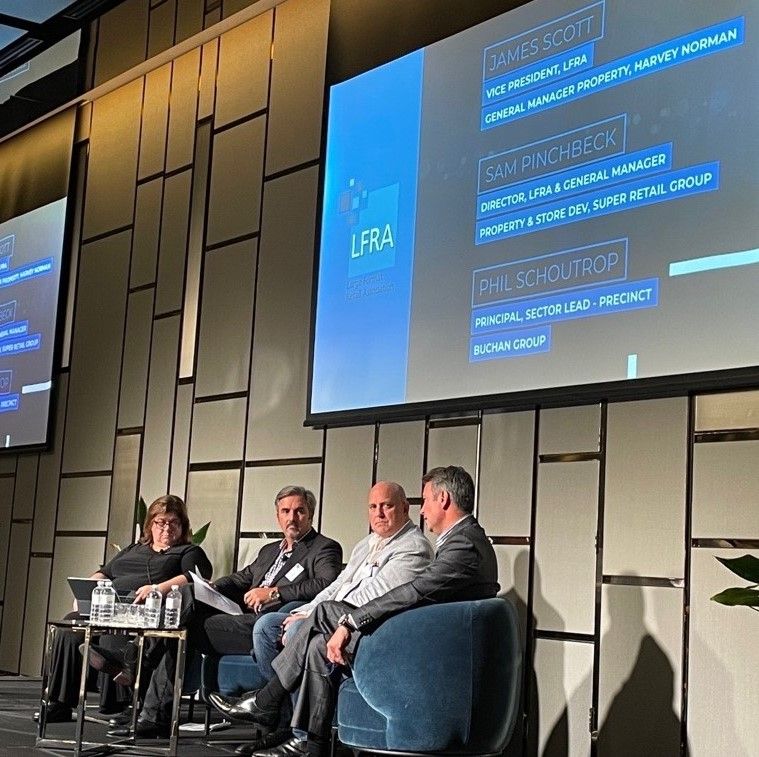That’s the headline from three experts who shared insights at the ‘Think International Precincts’ event held at Sydney’s Locomotive Workshop recently. Hosted by global design practice Buchan, the event offered lessons for Australian developers looking to create thriving urban precincts of the future.
Here are three takeaways to keep front of mind.
Feel-good places – it’s not just about spending
Good precincts are places people want to spend their valuable spare time, not just their money, says Phil Schoutrop, architect and precinct sector lead at Buchan. “People are looking for an experience – they’re looking for a good time, not just the purchase of goods.”
Diversity of amenity and experience are key, alongside inclusivity – making places where everyone feels comfortable.
“New precincts blur the lines between retail, leisure and commercial to create a feel-good place where people want to be. It’s a matter of doing the research and understanding the customer’s lifestyle. You get that right and it becomes a destination people want to come back to.”
He cites as an example Sydney’s heritage Locomotive Workshops, repurposed as a mixed-use precinct that doubles as a living museum. The site’s industrial and social history has been seamlessly woven into hospitality, retail and commercial tenancies and surrounding public spaces.
“We’ve created spaces that are encouraging for people to come and meet and socialise. You might come to get a beer, but you can also watch a projection on the side of the building and get an appreciation for a significant aspect of the city’s evolution. If you can get that balance and equation right, it forms the fabric, or the glue, and a reason why people will come together.”
Business Improvement Districts – effective governance for city-scale precincts
In busy, complex precincts that have multiple owners and authorities, the Business Improvement District (BID) model has proven highly successful at delivering quantifiable economic benefits, says Jace Tyrrell, the inaugural Chief Executive of the New Sydney Waterfront Company, the first BID in Australia.
A BID is a public and private partnership model that brings government, business and the community together to improve spaces through collective investment.
“Around the world, there’s an average of about 15 per cent net uplift in terms of commercial values where you have a Business Improvement District,” Tyrrell says.
He knows the model well, having been Chief Executive of Europe’s biggest retail and leisure destination and one of the largest BIDs in the world, London’s West End. There, 600 property owners and occupiers collectively raised $400m with the Local Council and Mayor of London to deliver a range of public realm and transport improvements.
Tyrrell says similar outcomes are possible in Australia. The New Sydney Waterfront Company is part of a $12bn transformation of Sydney’s western harbour precinct to create the world’s best urban waterfront. He hopes it will eventually bring together 500 owners and occupiers to collectively invest. Enabling legislation, now being finalised in New South Wales, will support formal partnerships.
“Where these partnerships work well, you obviously need to have a vision for the place,” says Tyrrell. Using evidence-based data, the Sydney Waterfront team has set targets for turnover, dwell time and the mix of occupiers and services across 2 and 10 years. The data has also helped the private sector work with the city and state to align policies and investment decisions.
“We have ambitions to create more stickiness of the precinct, to get visitors to stay longer and to move around the precinct more. Connectivity is a big issue for us. We’d like to operate a free electric ferry around the western harbour, underwritten by the business community.”
Tyrrell says the BID will also explore scaling Environmental, Social and Governance (ESG) initiatives, and the coordination of cultural activations, public art, and First Nations and education programs, demonstrating the potential for the BID to amplify the city’s vibrancy and community benefits.
Health and wellness – look to social wellness opportunities
Health and wellbeing are central to contemporary life and there is huge potential for integrating these elements into precinct development with a focus on social wellness, says Angela Lee, Managing Director Asia Pacific and Partner of global architecture practice, HKS.
As a health architect with over thirty years of experience in the USA and Asia, she says the days when ‘health’ simply meant ‘not being sick’ are long gone, not least because people are living longer and staying active well into later life. ‘When we think about health, it’s not just hospitals and clinics anymore,’ says Lee. ‘Health refers to physical, mental and social wellness.’
She identifies social health as an area of opportunity for owners and developers. ‘People are retiring but they are picking up their grandkids and they can still play. So that’s something that we can look at in a precinct. How can we integrate sports, school and kindergarten? People continue to learn together.”
She points to large projects in the USA and Asia that combine residential, health and sporting facilities, as well as hospital precincts that include retail medical offices, hotels, spas and commercial tenancies.
The role of technology is also critical. Physical and digital spaces are merging, impacting design. “You cannot just think of the architecture as the building. It has to be the architecture plus all the different add-on technology.”
The ‘Think International Precincts’ event was hosted at the award-winning Locomotive Workshop in South Eveleigh, a precinct that exemplifies best practice in precinct design, and one that Buchan is very proud to have been a collaboration partner on.
You can see more from the evening here in our photo gallery.
About Phil Schoutrop
Phil Schoutrop is Principal and Sector Lead – Precincts (retail and mixed- use) at global design firm Buchan, where he brings more than 30 years of international experience in commercial architecture to his role.
For the last decade, Phil has led significant integrated projects, in Australia, New Zealand, Asia, China, India, and Africa, that combine his expertise in the planning and design of retail, entertainment, mixed use and hospitality projects. Recent projects he has contributed to include the Locomotive Workshop in Sydney which has been awarded a Good Design Award and Property Council of Australia Heritage Development Award.
Strongly invested in sharing his knowledge, Phil offers his expertise to his clients, colleagues and the industry and is regularly invited to lead local and international conferences, panel discussions and study tours.
About Jace Tyrrell
Jace Tyrrell is the former Chief Executive of New West End Company representing Europe’s largest retail and leisure destination. His brief covered 600 businesses in London’s West End, with a property portfolio of $3.5 billion and an annual turnover of $10 billion, anchored on Bond Street, Oxford Street, Regent Street & Mayfair. Over the past few years his work secured over $200m million in direct investment into the area, enhancing the physical and commercial environment to ensure London’s West End maintains its pre-eminence as a global shopping and leisure destination post Covid.
In October 2022, Jace returned to Australia to head up the first Business Improvement District (BID) as the inaugural Chief Executive of the New Sydney Waterfront Company. Sydney’s Western Harbour is undergoing a $12bn (AUD) transformation this decade and working with partners, his mission is to create the world’s best waterfront in the greatest Harbour City.
About Angela Lee
Angela Lee is the Managing Director for Asia-Pacific, and a Partner at HKS. As founding director of HKS Singapore, Angela has led her team to win projects in the Asia-Pacific and MENA (Middle East and North Africa) regions. With almost 30 years’ experience, her projects have been honoured with design awards and recognised in various design publications.
In 2022, Angela was elevated to Fellow of the American Institute of Architects (FAIA) for her outstanding contributions to, and advancement of, the profession through design excellence and architectural education. She has been a Juror for the Urban Design and Architecture Design Awards.

